CERVICAL SCREEENING
@SANITAS is TSH 25,000.00
@SANITAS is TSH 25,000.00
ASK US A QUESTION
Check out Dr.SANITAS on TWITTER! Ask us your question today and get real time answers from the experts.
CECAP @ SANITAS
WHAT IS CECAP?
CErvical CAncer Prevention Program, is a global initiative begun by a combination of NGO’s and adopted by many governments, including that of Tanzania.SANITAS has adopted similar policies and procedures to that of this program to give our patients the same benefits. We seek to educate all of our female patients on the simple nature of the screening and the treatment, and the wisdom of regular screening.
WHAT IS THE RISK?
Cervical cancer is the third leading cause of cancer deaths in women worldwide with half a million new cases globally every year. There is a concentrated global effort to increase awareness of cervical cancer, to promote early and regular screening and to provide treatment quickly before the cancer can take hold.Cervical Cancer is 100% treatable and most often without recurrence. The cancer usually develops through the cervical tissue quite slowly, so with regular screening it can be picked up before it becomes serious.
But in Tanzania nearly 70% of women screening positive for cervical cancer will DIE FROM IT.
This is because women are unaware or reluctant to be screened. They are most often diagnosed too late when the cancer is in advanced stages and symptoms have developed that are mostly irreversible.
GET REGULAR SCREENING AT SANITAS
SANITAS offers cervical cancer screening to any and all females and particularly recommends annual screening to women over the age of 20 and below the ages of 50. Screening is available as a single service, as part of pre-pregnancy screening and part of a ‘women’s full body check’.Please contact us or see below for more information.
HOW IS THE SCREENING DONE?
SANITAS has adopted the WHO (World Health Organisation) recommended method of diagnosis and treatment for cervical cancer. Our nationally accredited screening officer conducts what is known as 'VIA', which means 'visual inspection with acetic acid'.Pap smears may also be used in screening, however this is a more expensive procedure and has significant time delays between screening, diagnosis and treatment.
VIA is very similar method to the Pap Smear, but rather than take a swab and wait 7 days for the results, the agent is applied (acetic acid) directly to the cervix and can provide instant results. The acetic acid causes a whitening of any pre-cancerous or cancerous cells and the nursing officer can tell you instantly if there is any cancer present.
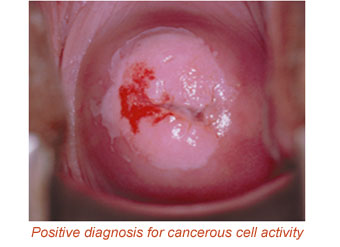
WHAT IS THE TREATMENT?
SANITAS has adopted the WHO recommended method known as 'Cryotherapy' for treating all cervical lesions. Cryotherapy is used globally as a treatment for pre-cervical cancer and has a success rate of 85% for the first treatment.WHAT IS CRYOTHERAPY?
Cryotherapy is a simple out-patient procedure, it takes just a few minutes, there may be a small amount of discomfort, but by the next day you will be ready to resume your normal activities.Cryotherapy is the process of freezing the cancerous cells to kill them. Liquid Carbon Dioxide (very cold) is placed on a probe and and placed near the abnormal cells. The cells freeze and die. To make sure all cancerous cells are dead the accredited officer may allow the cells to thaw and then refreeze them after a few minutes, to be sure of killing the cells.
It is important to know, that if the cancer has advanced into internal cervical tissue then Cryotherapy is not an option and surgical solutions will have to be scheduled. This is a much more expensive option, recovery time is longer and in the worst case scenario can affect your ability to conceive or bare children.
This is why it is SO IMPORTANT TO HAVE REGULAR SCREENING.
WHAT IS CERVICAL CANCER?
Cancer is always named after the part of the body it affects, so cervical cancer is cancerous cell growth in the cervix.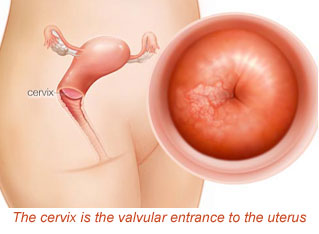
Occurrence of Cervical cancer is highly co-related with HPV (Human Papilloma Virus). HPV is a large family of viruses that affects the genital area and is transmitted sexually through bodily contact. Most of us (men and women) have had a HPV infection at some time but would be unaware of it, as it usually clears up on its own. HPV can also be dormant in many people and they may never develop and infection from it, or the infection may flare up years after the exposure.
When the infection in females is chronic it causes changes in the cellular growth in the cervix and can lead to the development of cancerous cells which then spread throughout the cervix and even on into the rest of the reproductive system and surrounding organs.
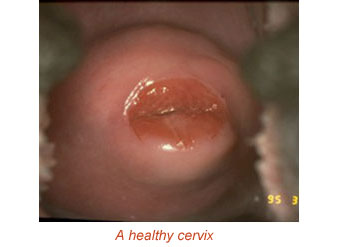
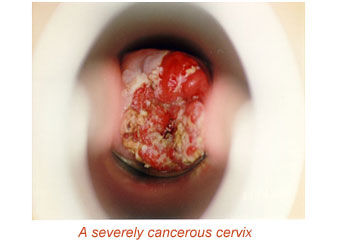
- Some activities can exacerbate your risk of severe HPV infection, such as:
- sexual activity at a very young age
- having multiple children
- multiple sexual partners
- unprotected sex
and of course you are particularly vulnerable if you have a compromised immune system, such as infection with HIV.
WHAT ARE THE SYMPTOMS?
This is one of the major problems with cervical cancer, there are no symptoms.After some time there may be small amounts of pain or cramping, some vaginal discharge, bleeding in between periods and other minor signs. But overall there are little clues to cervical cancer until it is too late.
**THAT IS WHY IT IS IMPORTANT TO GET REGULAR SCREENING**
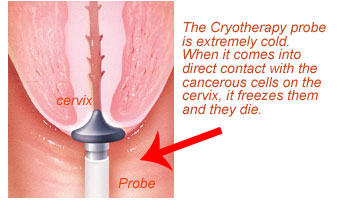
Call us to book your screening appointment today or contact our CECAP unit directly on screening@sanitasmedics.com.













